I have recently been trying to build an Arduino based VSWR bridge. The final goal is to make it feature rich but right now im having trouble calculating the forward and reverse voltage from the ADC inputs (or even from the raw voltages measured with my oscilloscope).
From what I've read in similar projects this is usually a simple linear relationship between ADC input and the forward and reverse voltages, from there its just a matter of calculating the power as if the voltage were across a 50 ohm resistor. My conclusion is that the issue is most likely in my electrical design somewhere.
I only made a single Directional Coupler but tried a few variations for the envelope detection circuit. All variants of my circuit seem to have the same problem so right now my suspicion is an issue in my Directional Coupler. But I've seen other people using the same design as me successfully, so it is just a guess. I could really use some help on what I might be doing wrong.
So let me add some technical details. These are the details I'm testing against or want to achieve.
Operational Frequency: 1.5 Mhz - 30 Mhz
Frequency used for testing: 21 Mhz
Operational Power Handling: up to 1500W
Power used during testing: 5W - 200W
Below is the schematic for my design, the image also includes the various voltages (DC) read under various conditions. These voltages seem odd to me as I get a lot of reflected voltage even when the load is a 50 ohm dummy. Each of the transformers in the schematic are 12:1 winding rations. The "1 loop" winding doesnt make a loop at all but simply passes through the middle of the core.
For some additional information here are pictures of the circuits. The first picture is the Arduino with a proto-shield containing the envelope detector (the AD8302 at the top is currently not used in the software and is high-impedance, so it can be ignored). The second picture is the high-power Directional Coupler. Everything was made by me (obviously).
Here are my thoughts so far on possible causes, but most of them I havent confirmed or am not really certain they are the root of the issue (rather than just considerations).
The diode is in its non-linear region. I ruled this out because the issue persists at high power and doesnt explain the high reflected voltage.
The issue is normal and I need to just calibrate for it in software. Though I've been unable to figure out how.
The hot glue I used that fills the center of the coils is lowering the Q of the coils significantly. This however, I don't think, would result in these symptoms.
The two coils are coupling causing the high reflected voltage. However this didnt seem to be as big an issue in other people's circuits.


